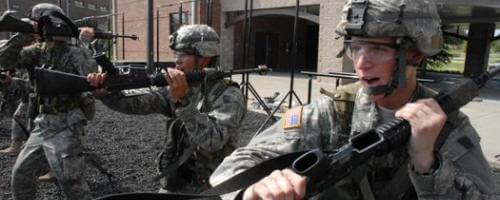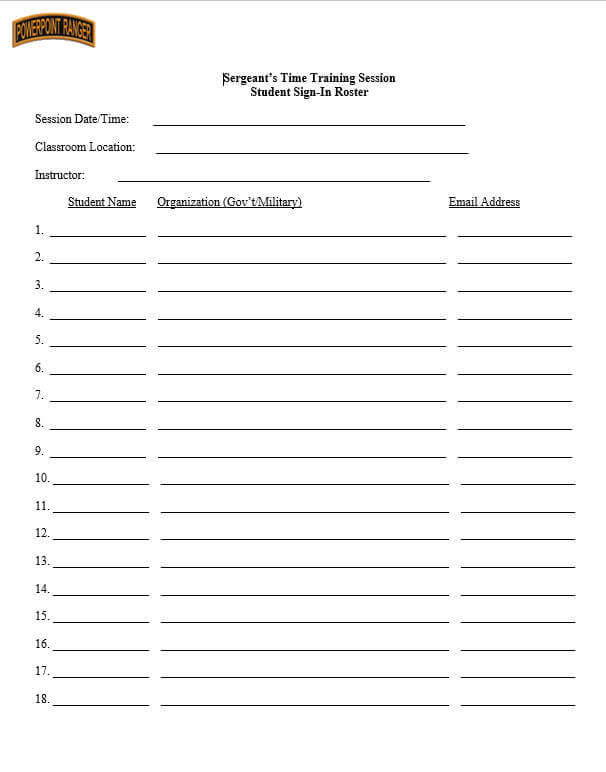Sergeants Time Training Sign-in Roster

Sample of a Sergeants Time Sign in Roster
Leaders need to document training to meet regulatory requirements, but regulatory compliance is not the only reason to keep training records. Training documentation may be needed as part of an internal management or quality system. Training records are also useful when evaluating the effectiveness of training programs.
Training records are evidence that Soldiers attended certain classes. Typically, training documentation includes the training topic, the name of the instructor, the date, and the trainee’s name. The trainer passes around a sign-in sheet at the training session or keeps a separate safety training file for each Soldier. Some trainers have each trainee sign or initial the training documentation. While the format of training records varies, all training documentation needs to be kept up to date and should be revised following each training session.
Here is a Sample Sergeant’s Time Memorandum:

Other types of documentation can be useful to trainers. While not exactly “records,” training program contents can be used to document how Soldiers were trained. Quizzes can be used to help gauge training effectiveness. Many trainers use surveys to get input for the training program. All of this documentation can be part of a complete training record keeping program.
About Sergeants Time Training
NCOs are the primary trainers of our soldiers. Sergeant’s Time Training (STT) affords a prime opportunity for developing our first line leaders while they gain confidence of their soldiers. Active Component commanders should institute STT as a regular part of the units training program. This will allow NCOs to train certain tasks to their soldiers in a small group environment. Tasks must crosswalk all the way to the Battalion Mission Essential Task List (METL) and commanders must direct their focus on the Quarterly Training Guidance.


